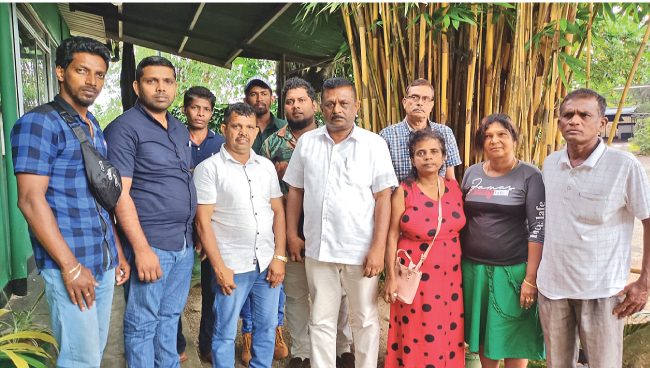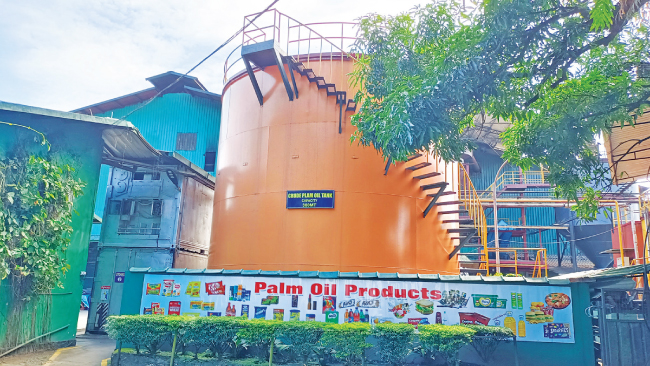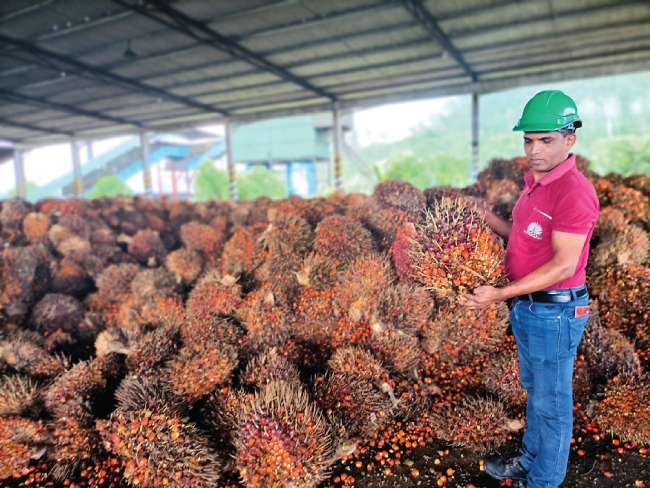Oil Palm smallholders request Govt. to lift plantation ban

There are over 3,000 small and medium Oil Palm smallholders who are eagerly awaiting the government to lift the ban imposed in 2012 for them to restart cultivation once again.
The Haritha Derana Society (HDS) set up in 2018 based in Mathugama contacted the media and said that the traditional cash crops, tea, rubber and coconut as well as paddy farming do not give them the required financial returns as again Palm oil.
“Economic comparisons reveal that oil palm generates an average profit of LKR 1,300,000/- per hectare per year, outperforming coconut (LKR 315,000), rubber (LKR 90,000), and tea (LKR 600,000),” said Nimal Wijesinghe from HDS.
“Additionally, monthly wages for workers in the oil palm sector range from LKR 50,000/- to 100,000/- surpassing those in tea (LKR 25,000) and rubber (LKR 18,000) industries.”

Currently, 40 per cent of the total global palm oil production comes from smallholders like us and many want to engage in this profitable business.
Meanwhile, women members from HDS said that when engaging in tea plucking they have to leave the home for several hours and this creates many social problems as they have to leave their kids at home.
She also said that nursing Palm trees and even cutting and selling its produce is relatively easy as against this and they only have to spend around three hours a day for a maximum of a month.

“This even gives us an opportunity for us to do another job,” she said.
“We have also forward buying agreements with the nearby AEN Palm Oil company who not only gives us ready cash but also technical advice to improve productivity.
An official from HDS stated that thousands of acres in their region have been cultivated and sustained in the past without experiencing soil degradation or water scarcity. This observation contradicts the frequent criticisms from environmental groups concerning the negative impact of palm oil plantations on natural resources.
Sri Lanka currently imports 180,000-220,000 metric tons of vegetable oil annually spending around USD 200 million.
This demand could be efficiently met with 50,000 hectares of oil palm or 271,000 hectares of coconut. Notably, oil palm demonstrates a significantly higher oil yield per hectare, ranging from 4 to 5 times more than coconut.
With 50,000 hectares of oil palm, Sri Lanka also has the potential to generate up to 300,000 livelihoods among smallholders and workers, alleviating rural poverty, in keeping with experiences in other oil palm-growing countries.
When contacted an official from AEN Palm Oil company in Mathugama said that two factories process Palm oil and they each produce around 15,000 metric tons per annum.
“We produce Crude Palm oil which is used to make edible palm oil mainly used for cooking, bakeries, confectionery and many other uses.
In addition, we also manufacture Palm Kernel Oil used for the cosmetic industry and the meal is used by the animal feed industry.
He said that their factories run under capacity due to lack of raw material, Palm seeds and have the capacity to double their production.
Meanwhile, National Science Foundation Chairman Prof Ranjit Senaratne at a Workshop to Review the Current Policy on Oil Palm Cultivation in BMICH said that the water footprint of oil palm (1,097 m3 water/tonne) is notably lower than that of coconut oil (2,678 m3 water/tonne).
The same for rubber and tea is much higher, i.e., 13,737 and 8,856 m3 water/tonne respectively.
Text and Pic by Shirajiv Sirimane in Mathugama